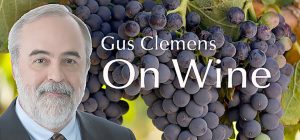What makes a great wine? There is a hard and fast answer: “great wine comes from great vineyards.”
What makes a great vineyard?
• Terroir. This is big net answer because the French term includes soil composition, climate, topography, even the culture and experience of the vineyard-winery workers.
• Soil. Different grape varieties thrive in different types of soil. Merlot is particularly suited for clay soil that holds water. Cabernet sauvignon prefers gravelly soil that drains well. Chardonnay enjoys limestone soil. Sauvignon blanc’s ideal is sandy loam. The mineral content of the soil also can enhance character and complexity.
• Climate. Well, of course. In particular, diurnal shift—the change in temperature from day to night—is a precious quality. Hot day engenders ripeness and tasty fruit, while cool nights develop balancing acidity.
• Topography. In cool climates in the Northern Hemisphere south-facing slopes maximize heat and sun exposure. In warm climates, east, north, or northeast facing slopes help avoid overheating. Water drainage, slope, and elevation all can play a part.
• Vineyard management. When nature gives you advantages, it is up to you to make the most of them. That includes decisions on farming methods. What to plant and how to plant. Pruning and canopy management are vital, a task that demands experienced vineyard workers.
Where do these elements exist? The glory of wine, engendered by wine grape diversity, is there are places all over the world where you can make good wine. From the drenching rains of Minho province in Portugal to vineyards in the Atacama Desert in Chile—the driest place on earth—to the cold climes of the Niagara Peninsula and Okanagan Valley in Canada, clever humans have figured out what grape variety, vineyard configuration, and management decisions work in their special place in creation.
After the interplay of these elements in the vineyard, the job of making great wine then falls to the artistry of winemakers. There is an almost universal agreement among great winemakers: their job is to largely stay out of the way and allow the vineyard to express itself. After all, “great wine comes from great vineyards.”
Tasting notes:
• Serego Alighieri Possessioni Garganega e Sauvignon del Veneto 2021: Fresh, fruit-forward blend of garganega (the main grape of Soave) and sauvignon blanc. $20 Link to my review
• DeLille Cellars Métier Cabernet Sauvignon, Columbia Valley 2021: Bold but approachable. Saturated with dark fruit flavors. $23-30 Link to my review
• Texas Hills Vineyard Sangiovese, Texas High Plains, Newsom Vineyards 2015: Delicious Texas interpretation of the great red grape of Tuscany. Almost decadent ripeness. $25 Link to my review
Last round: Thank you for explaining the meaning of “many.” It means a lot to me. Wine time.

